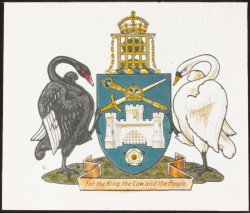Staff at the National Library of Australia are not able to provide legal advice.
Every effort is made to provide accurate and relevant information, but this does not constitute qualified legal advice.
Disclaimer
Staff at the National Library of Australia are not able to provide legal advice.
Every effort is made to provide accurate and relevant information, but this does not constitute qualified legal advice.
From 1911 until self-government in May 1989, the laws of the Australian Capital Territory were made by Acts of the federal Parliament or by ordinances made by the Governor-General. From 1974 – 1986 these ordinances were passed after consultation with the House of Assembly and Legislative Assembly. From 1989 they were made by the ACT Legislative Assembly, and pre-1989 ordinances became known as Acts. However, a few laws are still administered by the Commonwealth and these are still known as ordinances.
The Library holds printed copies of Australian Capital Territory legislation, including both recent and historical Acts and ordinances. Use the online catalogue to find and retrieve material using your library login.
Key resources include:
A consolidated Act repeals and re-enacts existing legislation and statutory instruments relating to a particular subject.
The main purpose of a consolidation is to draw together different enactments on a topic into a single Act and so simplify the presentation of the law. The Act usually replaces provisions in different Acts passed over a period of years.
A consolidated Act contains only those sections that are in force at the time of consolidation. Consolidations also include schedules (list of all changes made to the legislation since it was introduced).
Consolidations are a large undertaking, so do not occur often. Acts are consolidated when the government has passed all current Acts and amendments back through parliament to produce a unified Act.
The Laws of the Australian Capital Territory were consolidated in 1959. This three-volume edition contains all laws of the ACT in force on 1 January 1960. Volumes I and II contain the ordinances, Volume III contains regulations and orders, and Commonwealth acts and regulations specific to the ACT. This edition was preceded by a two-volume consolidation covering the period 1911 – 1938.
Reprinted acts will incorporate all amendments to an Act at the point of reprinting.
The Library holds Reprinted Acts for the Australian Capital Territory from 1992 to 2014, though not all issues between those dates may be held.
‘Point-in-time’ legislation allows you to access a version of the law as it appeared at a particular point in the past.
If you are researching a legal issue from ten years ago you will need to use the legislation as it was ten years ago, not the legislation as it is today – as it may have been amended.
You will need to track changes to the legislation in order to reconstruct its history to find the relevant ‘point-in-time’ version of the legislation for the issue you are researching.
To locate the most recent version of the Act prior to the date you are researching:
Alternatively, in the Library, you can look for a paper copy reprint prior to the date you are researching. Once you have located the most relevant version of the Act, you then need to consider any subsequent amendments prior to the date you are researching.
The Table of A.C.T. laws is an index to Australian Capital Territory legislation for the period 1911 – 2000. The 1999 bound volume includes lists of in force Primary Laws (Acts) and Subordinate Laws (regulations), as well as lists of reprinted and repealed laws, and a chronological list of all ACT ordinances and laws 1911 – 1999.
